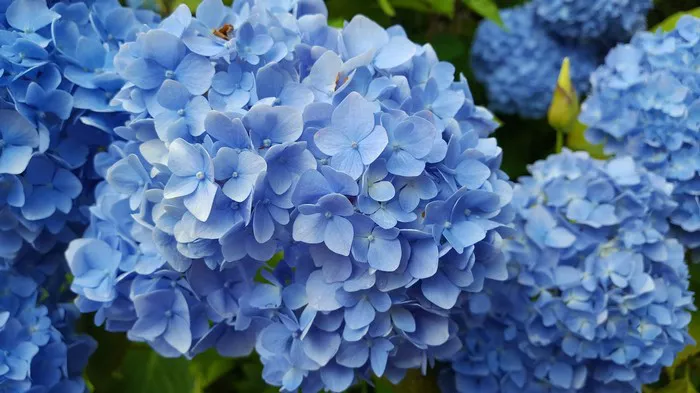Hydrangeas are beloved for their stunning blooms, and blue hydrangeas, in particular, captivate with their ethereal hue. While these blossoms bring joy to gardens and bouquets during the warmer months, their beauty doesn’t have to fade with the changing seasons. Drying blue hydrangea flowers allows you to enjoy their charm year-round, whether as decorative accents, crafting materials, or sentimental keepsakes. In this comprehensive guide, we’ll delve into various methods and techniques to successfully dry blue hydrangea flowers, ensuring their vibrancy endures long after they’ve been harvested.
Understanding Blue Hydrangeas
Before delving into drying techniques, it’s crucial to understand the nature of blue hydrangeas. Hydrangea macrophylla, commonly known as bigleaf hydrangeas, are renowned for their ability to change color based on soil pH. In acidic soils, aluminum becomes available to the plant, resulting in blue flowers. Alkaline soils produce pink or red blooms. This natural color variability extends to dried hydrangea flowers, with blue varieties retaining their distinctive hue if dried properly.
Selecting the Right Hydrangeas
Not all hydrangea blooms are suitable for drying. To achieve optimal results, select blooms at the peak of their beauty, just before they begin to fade on the plant. Look for blooms that feel papery to the touch and exhibit vibrant coloration. Avoid flowers that are wilted, browning, or showing signs of decay.
Choosing the Drying Method
Numerous methods exist for drying blue hydrangea flowers, each offering distinct advantages and considerations. The choice of method depends on factors such as time constraints, desired outcome, and available resources. Let’s explore some popular drying techniques:
1. Air Drying
Air drying is one of the simplest and most traditional methods for preserving hydrangea blooms. To air dry blue hydrangeas:
- Gather small bunches of blooms, removing excess foliage and trimming stems to the desired length.
- Secure the stems together with a rubber band or twine.
- Hang the bunches upside down in a cool, dry, well-ventilated area, away from direct sunlight.
- Allow the flowers to air dry for several weeks, checking periodically for dryness.
Air drying preserves the natural color of blue hydrangeas and works well for individual blooms or small arrangements. However, this method can result in brittle petals if not executed with care.
2. Silica Gel Drying
Silica gel is a desiccant commonly used for drying flowers quickly while preserving their shape and color. To dry blue hydrangea flowers with silica gel:
- Fill a container with silica gel crystals, ensuring there’s enough to fully cover the blooms.
- Trim the hydrangea stems and remove excess foliage.
- Gently place the blooms face up in the silica gel, making sure they’re not touching each other.
- Carefully sprinkle additional silica gel over the blooms until they’re completely covered.
- Seal the container and let it sit undisturbed for several days to a week, depending on the thickness of the blooms.
Silica gel drying offers the advantage of preserving the hydrangea’s shape and color with minimal distortion. It’s ideal for delicate blooms or when time is of the essence. However, silica gel can be expensive, and the process requires airtight containers.
3. Pressing
Pressing is a classic method of preserving flowers that works well for flat or two-dimensional arrangements. While blue hydrangeas are naturally full-bodied, pressing can still yield beautiful results for individual petals or smaller blooms. Here’s how to press blue hydrangea flowers:
- Place individual hydrangea blooms or petals between sheets of absorbent paper, such as blotting paper or parchment paper.
- Arrange the blooms evenly, ensuring they’re not overlapping.
- Carefully stack heavy books or place weights on top of the paper to apply pressure.
- Leave the blooms to press for several weeks, checking periodically for dryness.
Pressed hydrangea flowers are ideal for crafting projects such as greeting cards, bookmarks, or framed artwork. However, this method may result in some loss of color intensity.
4. Microwave Drying
Microwave drying is a quick and convenient method for preserving hydrangea blooms, although it requires caution to prevent overheating. Here’s how to dry blue hydrangeas using a microwave:
- Trim the hydrangea stems and remove excess foliage.
- Place the blooms between two sheets of paper towel, ensuring they’re not touching.
- Microwave on low power for short intervals, typically 30 seconds to one minute at a time.
- Check the flowers regularly for dryness, adjusting the microwave settings as needed.
Microwave drying offers the advantage of speed, with blooms typically drying within minutes rather than weeks. However, it requires careful monitoring to prevent scorching or over-drying.
Enhancing and Protecting Dried Hydrangeas
Once dried, blue hydrangea flowers can be enhanced and protected to prolong their beauty and longevity. Consider the following tips:
Sealing: To protect dried hydrangeas from dust and damage, consider sealing them with a clear acrylic spray or hairspray. Hold the spray can several inches away from the blooms and apply a light, even coat.
Rehydrating: If dried hydrangeas appear brittle or lackluster, you can rehydrate them by gently misting with water or submerging them in a shallow container of water for a few hours. Allow the blooms to air dry afterward.
Displaying: Showcase dried hydrangeas in vases, wreaths, or floral arrangements to add a touch of elegance to your home décor. Combine them with other dried flowers or foliage for added texture and visual interest.
Storage: Store dried hydrangea blooms in airtight containers or sealed bags to protect them from moisture and pests. Place a silica gel packet or a piece of chalk in the container to help absorb any excess moisture.
Conclusion
Drying blue hydrangea flowers allows you to preserve their beauty and charm, extending their lifespan beyond the fleeting bloom of summer. Whether you choose to air dry, use silica gel, press, or microwave dry, each method offers unique advantages for achieving the desired outcome. With proper care and attention to detail, you can enjoy the timeless allure of blue hydrangeas year-round, adding a touch of elegance to any space or occasion.


